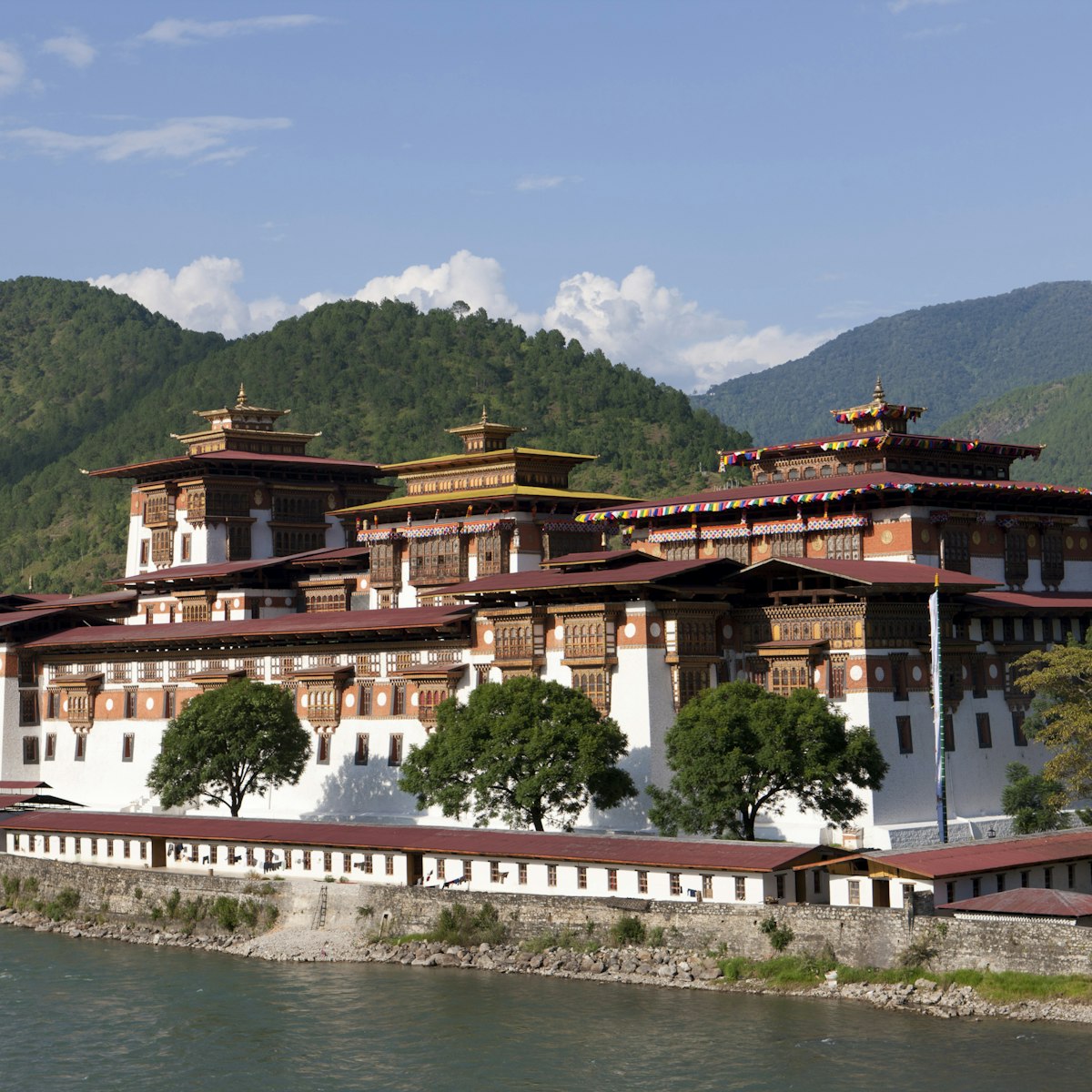Gangte Goemba enjoys prime real estate, on a forested hill overlooking the green expanse of the entire Phobjikha valley. The extensive complex consists of the central goemba, monks' quarters, a small guesthouse and outlying meditation centres. Much of the interior and exterior woodwork of the 450-year-old goemba was replaced between 2001 and 2008 due to a beetle-larvae infestation.
During a visit to the Phobjikha valley, the 15th-century treasure-finder Pema Lingpa prophesied that a goemba named gang-teng (hilltop) would be built on this site and that his teachings would spread from here. Pema Thinley, the grandson and reincarnation of Pema Lingpa, built a Nyingma temple here in 1613, and the larger goemba was built by the second reincarnation, Tenzing Legpey Dhendup. The current Gangte trulku (reincarnation), Kunzang Pema Namgyal, is the ninth reincarnation of the 'body' of Pema Lingpa.
The tshokhang (prayer hall) is built in the Tibetan style with 18 great pillars around an unusual three-storey inner atrium, and is one of the largest in Bhutan. The inner sanctum houses the funeral chorten of founder Tenzing Legpey Dhendup. The monastery's three-day tsechu (September/October) ends with the hanging of a large thondrol on the final day; at other times the huge thangka (painted or embroidered religious picture) is stored in a steel box in the inner sanctum.
Upstairs is the Machey Lhakhang, holding the central funeral chorten of the sixth Gangte trulku. Monks will tell you that when the lama died, his body shrank down to the size of a baby and then the size of a peanut.




